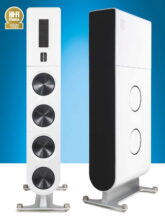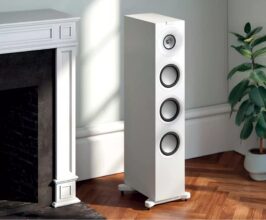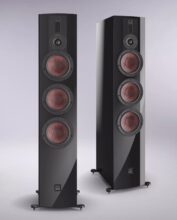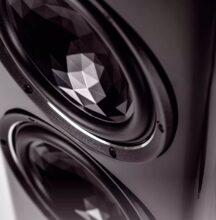Piega Coax 811 Review
Piega dazzled at HighEnd in Munich with the new Coax series. Development chief Roger Kessler likes to compare the top model 811 to the Porsche 911. Rightly so?
by Michael Lang
The family-owned company, idyllically located in Horgen on Lake Zurich and now led by Alexander and Manuel Greiner in the second generation, has been the undisputed market leader in Switzerland for years in the field of high-quality loudspeakers and has the world elite competing there firmly under control.
This is not only due to Swiss stubbornness and home advantage, but to structures that have developed over more than 30 years: quality, reliability, the regularly held “Open Day” for fans and interested parties of the brand, and a network of loyal and reputable dealers who appreciate the advantage of direct contact with the company’s and development department.
Consistency and Progress
That hasn’t changed even after the departure of founders Leo Greiner, who was responsible for design and commercial matters, and developer Kurt Scheuch. However, research and development work has changed significantly, which now, with state-of-the-art measurement technology, leads to faster and often surprisingly significant further developments. But even if using the latest measurement technology can avoid some wrong turns and implement goal-oriented ideas faster, this does not make careful, detail-oriented development and extensive intensive listening unnecessary. So, Roger Kessler and his team turned all conceivable screws to catapult the Coax series of the Swiss a good deal further forward sonically.
Brand Core Preserved, Still a Big Step
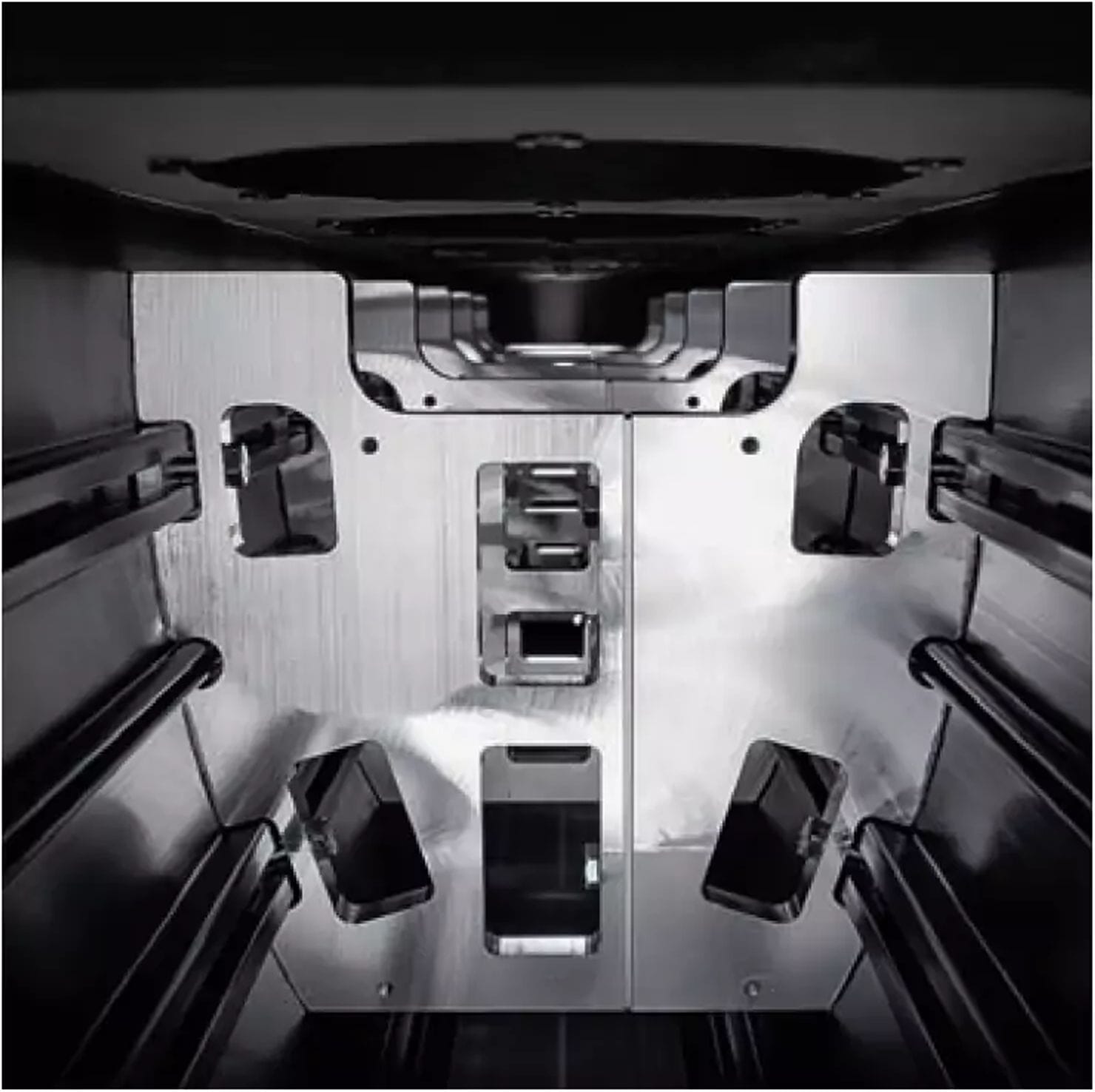
The beginning was made with the cabinet. It has not only become somewhat larger than the quasi “predecessor” 711 to give the bass more depth and higher level reserves with lower distortions—thus more cleanliness and punch—but also had to be braced differently due to the increased volume. The aluminum extruded profile of the cabinet is now under controlled tension to eliminate vibrations. The cabinet shape was also optimized based on acoustic aspects; in particular, the rear sound portion in the lower midrange is now better absorbed, promise the Swiss.
Test Equipment
Turntable: Transrotor Rondino
Streamer/CD Player: T+A MP 3100
Integrated Amplifiers: Musical Fidelity M8xi, Symphonic Line RG 14 Edition
Preamplifiers: Octave HP 300 SE, Accustic Arts Tube-Preamp II
Phono Preamplifier: Audionet Pam G2
Power Amplifiers: Accustic Arts Amp II MK4, T+A M200, NAD M23 (2x)
Speakers: B&W 801 D4
Cables: AudioQuest, Cardas, HMS, Inakustik, Stockfisch, Supra
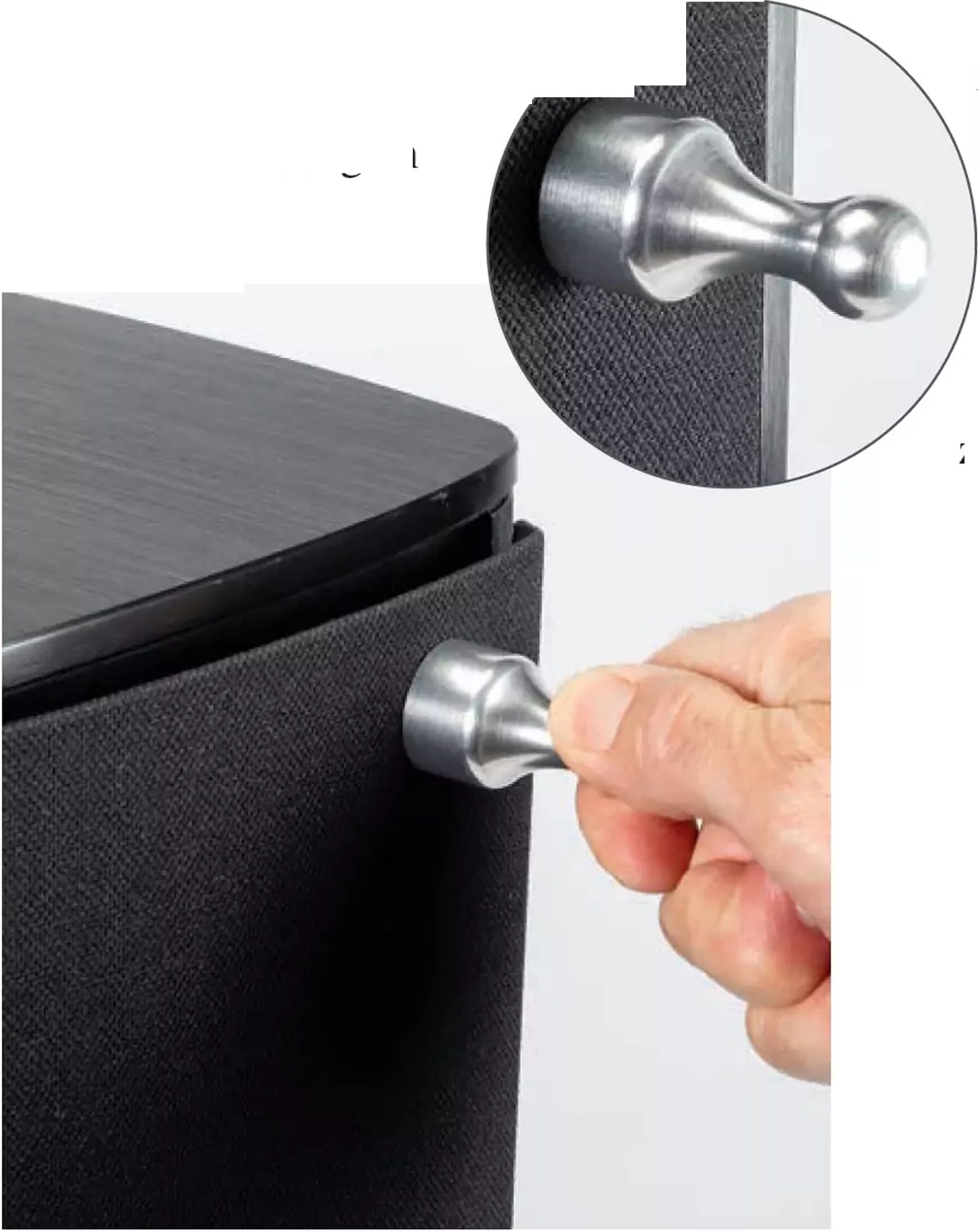
The two 22 cm woofers manufactured by Seas to Piega’s specifications are supported in their action by two equally sized passive membranes per box. This solution is more complex and expensive than a bass reflex solution but brings sonic advantages according to the Swiss, which is why the drivers from the still-produced 711 were adopted but now with a changed operating point because the coaxial driver now runs lower.
But undoubtedly the coaxially constructed ribbon for the mid/high range is the key feature and namesake. Thanks to collaboration with a Swiss university, detailed investigations were started and the right conclusions drawn for a comprehensive overhaul. So, upon closer inspection, nothing remained as it was. The mechanical separation of the magnet rods was revised, and the front plate reinforced with a cross brace, making it possible to bond the magnets softly with a novel adhesive, which is intended to reduce resonances and further optimize the damping properties of the newly developed and specially coated foil.
This has the advantage, they tell us, that the frequency response of the driver could be linearized in its lower operating range, and the connection to the woofer now takes place at 470-480 Hertz. As a result, distortion is also reduced, and higher detail and resolution are achieved in conjunction with even more natural vocal reproduction.
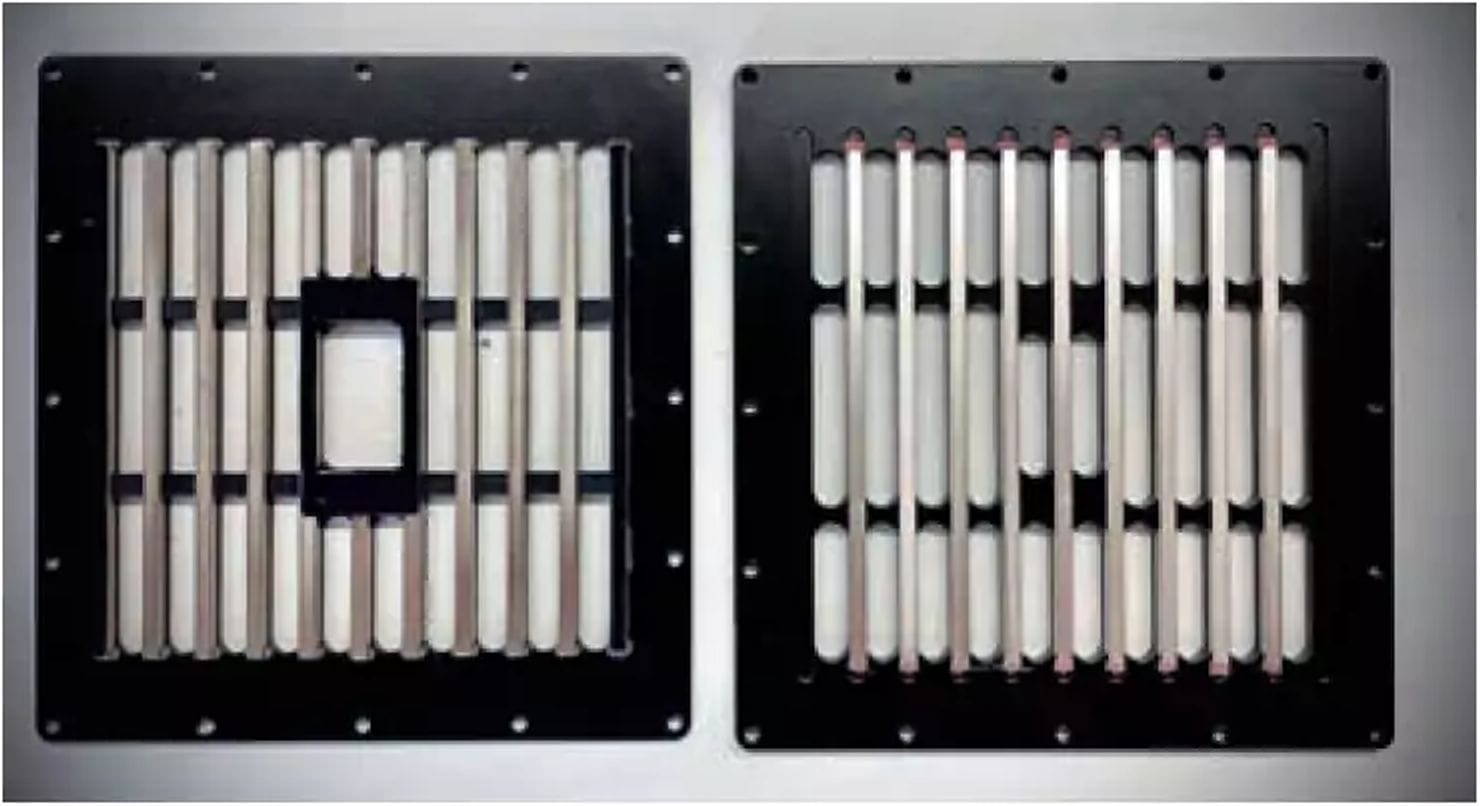
Efficient and Dynamic
But a lot has also happened in terms of efficiency. An additional neodymium magnet above the tweeter brought several decibels more efficiency, which is supposed to help the dynamic properties and impulse response. Not to forget: Each individual coaxial driver is created with meticulous handcrafting. If the technician is having a bad day and does not work with the necessary Swiss precision, the day’s production inevitably falls out—which fortunately is extremely rare.
But of course, it requires a much higher time investment to assemble such a complex driver by hand than to let a normal driver roll off the assembly line. And that Swiss handcrafting has its price is known to anyone who has ever been interested in a watch from there.
Let’s take a look at the crossovers working in secret: Here, separate boards are used for bass and mid/high frequency. In combination with the cabinet properties, they are tuned to a Linkwitz-Riley characteristic. The mid/high section works with high-quality MKT capacitors and air coils, while special electrolytic capacitors and iron core coils are used for the bass region.
The revision is therefore more of an all-round renewal, which is why an MK-something version in the naming would have been rather inappropriate.
And with correspondingly high expectations, we then went into the listening sessions. After the always necessary search for the placement, angling, and distance to the listening position, we immediately started cheerfully with checking impulsivity and voice reproduction, for which we used an excerpt from an SWF radio play “The Sky Covers Everything with Silence.”
Tension and Homogeneity
The Piega brought out the latent tension of the production, expressed in the voices of the male narrator and his female counterpart, very well. Even the initially only squeaking and finally slamming door is reproduced so faithfully to the impulse that a small moment of shock occurs even if you have heard the recording dozens of times. More convincingly than ever heard over a Piega is also the homogeneity and seamlessness with which the 811 acts here and lends voices authority and credibility. This extremely positive impression was confirmed when we turned our attention to Martha Argerich and her interpretation of Chopin’s piano concerto with the London Symphony Orchestra under Claudio Abbado. The grand piano stood large and almost tangible in the listening room; the sensitivity of the “lioness’s” playing remained always recognizable despite all the power, as did the precision work that Abbado and the orchestra delivered here.
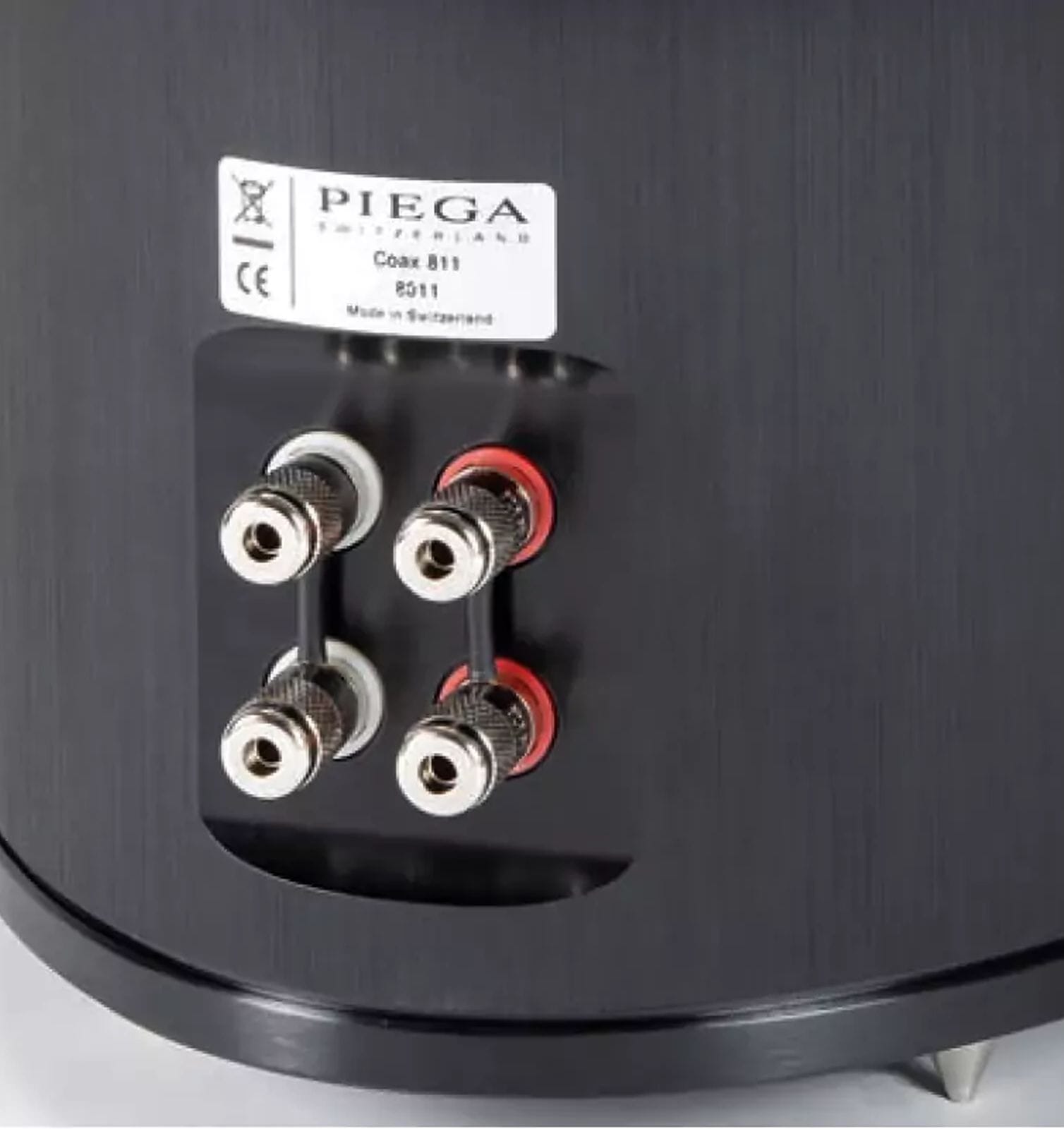
Classic Design
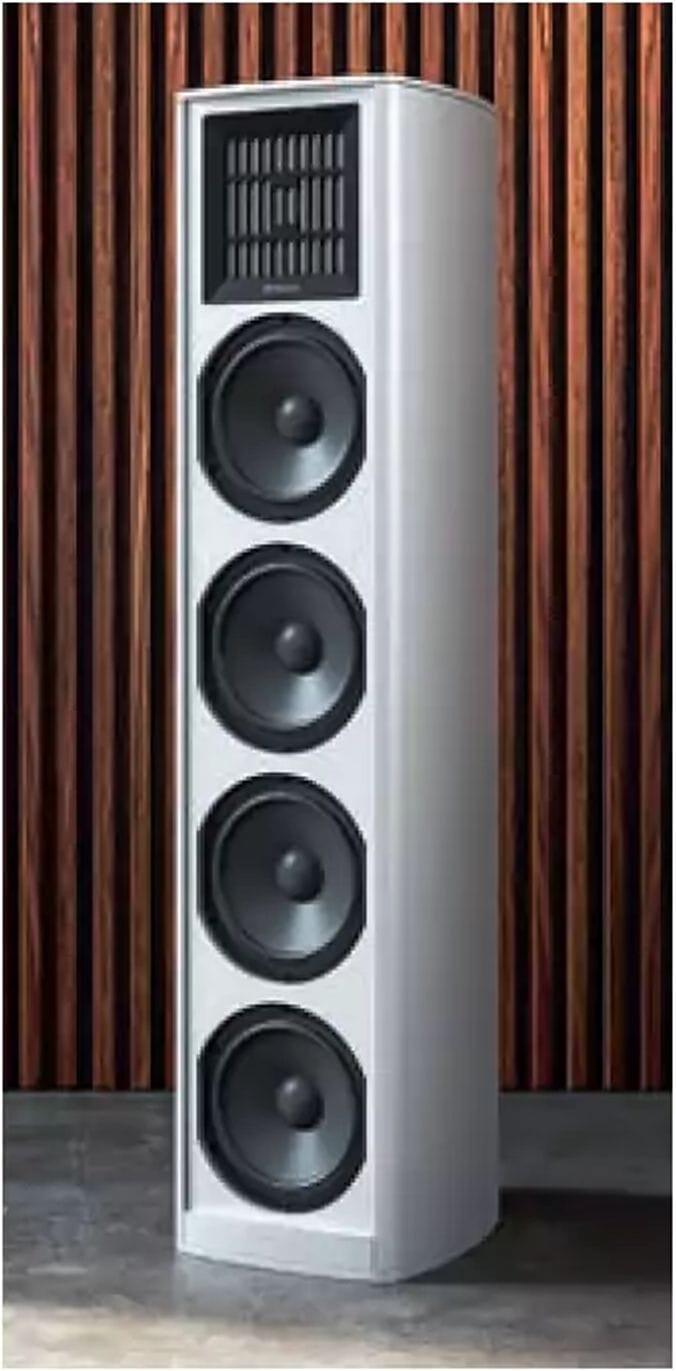
A switch to guitar and catchy jazz occurred when we played a recording from “The Village Gate” with the Charlie Byrd Trio along with guests from 1963. Lots of atmosphere, ambient noises, and the legend Clark Terry on trumpet provided toe-tapping moments and immersion into the New York jazz cellar to withdraw from the dreary Euskirchen in the wet and cold September 2022 for a while. How about you? Are you satisfied with a speaker equivalent to a VW Golf if everything is right up to decent room volume, and is higher sound pressure of little significance to you? Then you are missing out on a lot of fun with the 811, because in terms of sound pressure potential, it has about as much to offer as a vehicle from Stuttgart with the world-famous abbreviation 911 in terms of speed.
Great Ease
Even well beyond the 100-decibel mark, which we teased out with Joe Jackson’s “Steppin’ Out,” the 811 still reaches out very powerfully but completely relaxed. Not only does the bass sound powerful here, but also very controlled and connected to the extremely fine-resolving coaxial ribbon in a way that the still-offered 711 only manages to do to some extent. It should also be mentioned that imaging, proportions, and playfulness also take off to great heights with the 811, without ever pushing its qualities obtrusively into the spotlight.
Yes, the 811 costs a whole lot more than the proven 711. If the price is still within your reach, I am very sure that you will do everything possible to acquire a speaker with the 811 that convinces as much as the 911 on four wheels.
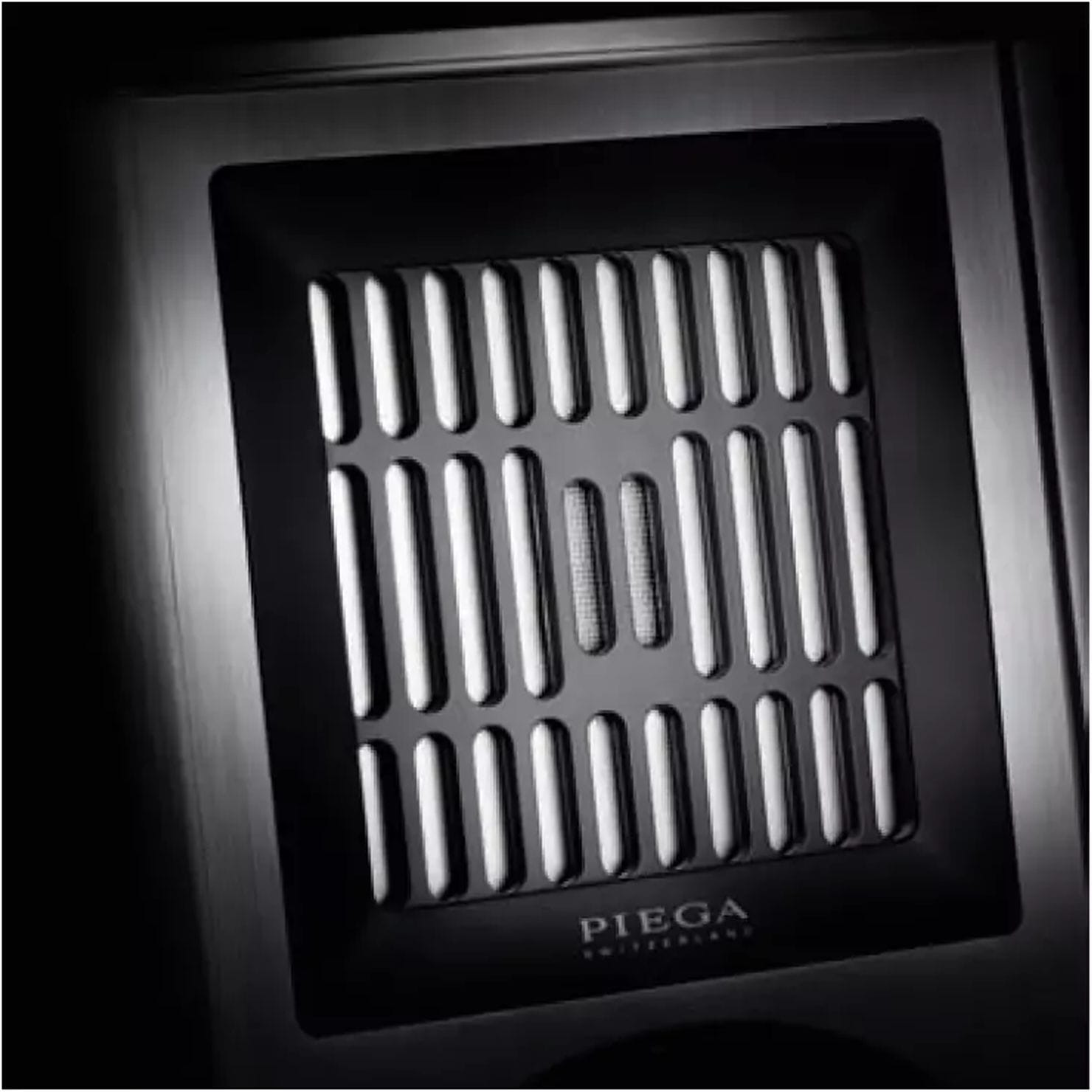
Piega Coax 811 Specs
Price: from $29,600 (Price in natural aluminum; available in black aluminum or white lacquered for $30,250)
Dimensions: 29 x 127 x 43 cm (WxHxD)
Warranty: 6 years
That’s how you imagine progress: more precision, homogeneity, and playfulness than ever with the usual excellent workmanship. Despite all qualities, still comparatively compact and living room friendly.
Measurement Results
DC Resistance: 6 Ohms
Minimum Impedance: 3.9 Ohms at 94 Hz
Maximum Impedance: 10.7 Ohms at 1731 Hz
Sensitivity (2.83 V/m): 86.4 dBSPL
Power for 94 dBSPL: 7.54 W
Lower Cut-off Frequency (-3 dBSPL): 43 Hz
Distortion at 63/3k/10k Hz: 0.38/0.09/0.09%
Laboratory Comment
Very low distortion, decent efficiency, and uncritical impedance curve. Frequency response is okay; there would be some room for improvement in the impulse response. Angle towards the listening position; the ribbon narrows the dispersion.
Features
Three-way speaker with two passive basses and coaxial ribbon for mid and high frequencies. Bi-wiring terminal; removable cover; spikes included
Verdict
Munich High End Audio Show 2024: Hifi Rose + Piega Coax 811 speakers
This recording was done using Samsung Galaxy 23 Ultra and Shure MV88+ Microphone. More details to come in the show report ...



